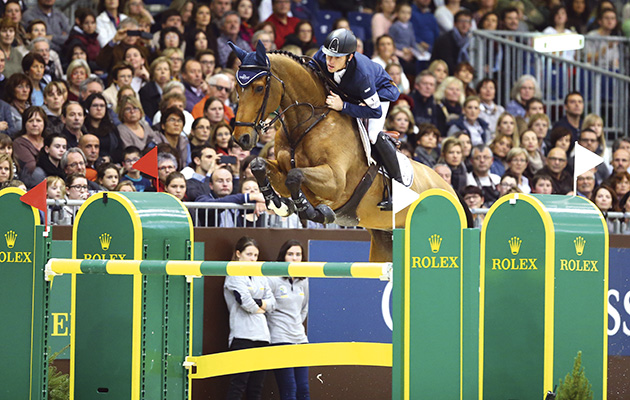Via: Horse&Hound
A pioneering system to help the wider public understand showjumping is to be used at the CHI Geneva this year (10-13 December).
The system was created by PlayfulVision, which is based in Lausanne, and will be used during the TV broadcasts on the main screens at the showground, as well as via the internet.
It will be used in the Rolex Grand Prix — the first leg of the Rolex Grand Slam.
At the end of the competitions, a chart will allow a comparison of the performance of the top two riders in the class.
The time, the distance travelled, the number of strides taken and the average speed will be displayed on screen, with the aim of providing a better understanding as to how and why the competitors were placed in first and second position. The errors made, if any, will also be analysed.
A view of the two rounds of the two best riders of the class — horse tracking — will allow for a visual comparison of the lines each rider chose.
“This innovation will provide a new insight to showjumping and help [the public] to understand more precisely the subtleties of the sport,” according to the developers.
The technology has previously been used in volleyball and tennis.
“One of our key strengths is the fact that we can adapt this technology to multiple environments and different sports,” David Kappeler of Playfulvision told H&H.
Between six and eight cameras are used in the arena.
“Over the past few years, we have been partnering and working with major international sport federations to help them promote their events as well as to increase their fan engagement. Our partnership with Geneva is our first significant step in the domain of equestrianism and will be soon followed by others,” he added.
Sophie Mottu Morel of CHI Geneva said the show was “thrilled to offer this novelty” to spectators and competitors.
“The collected data will provide a new view of showjumping. Typically with a jump-off, it is not always easy to explain precisely what allowed one rider to be quicker than the other,” she added.
“The statistics provided by this system and the visual superposition of the courses should help bring answers.
“This data will not only be useful to the public and the competitors, but also to the TV commentators during broadcasts. This solution has real added value and is a huge step forward in the use of technology in our sport.”
END


